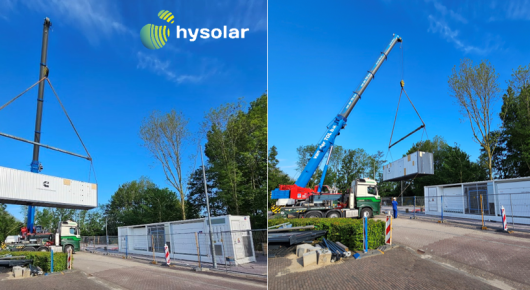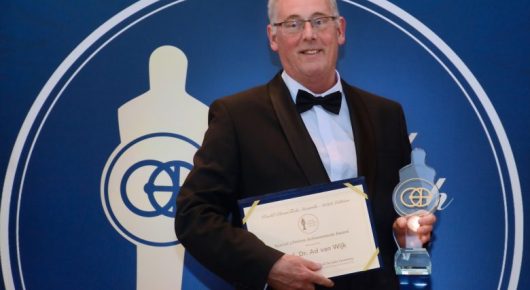Power-to-X System Design: key to application of green hydrogen
10 September 2020Satisfying local energy needs as much as possible through local sustainable energy sources: that is one of the core elements of the Power-to-X concept. Sustainable electricity is used directly, converted into hydrogen, or used to store heat in the subsurface by means of a heat pump. A consortium headed by KWR has worked out the concept to the point where its realisation is now possible. Hysolar is gratefully making use of the acquired knowledge, among others, to establish hydrogen production and the refuelling station in Nieuwegein.
Years of research
Scientific research over the last four years has created a solid foundation for the Power-to-X concept. The first phase involved an exploration of the concept’s feasibility, resulting in the publication of Solar Power to the People which describes a vision of a future energy system. Although it is true that the book discusses Nieuwegein as a case example, the outcomes are also applicable elsewhere. The Power-to-X calculation model was developed to facilitate this process. The concept was then further elaborated, and the results of this process can now be read in the report on the system design (in Dutch), Solar Power to the People: Systeemontwerp Power-to-X. The consortium in which the partners closely collaborated comprised, besides KWR, Allied Waters, PitPoint (now part of Total), Delft University of Technology, VolkerWessels and Waternet. The initiative was co-funded by the Energy and Water Top Sectors.
Is green hydrogen feasible?
Locally-generated electricity will be used in Nieuwegein to produce hydrogen using an electrolyser. Besides the technical design, the report also elucidates the economic aspects and the expected evolution of the demand for green hydrogen in the transport and mobility sector. The concept’s economic feasibility comes into view in a future when we apply hydrogen at a large scale. Since its application is still in its initial phase, investments logically need to be subsidised. It is equally important that investors themselves be strongly motivated to use green hydrogen. In this regard, the report provides an interesting picture of the current situation: ‘Businesses that can use this to strategically position themselves constitute the best power base. Green hydrogen is primarily of interest to those businesses or organisations that (1) have strategic objectives related to sustainability, (2) serve clients who stipulate sustainable solutions, (3) can benefit logistically (short charging/filling time compared to BEVs, greater range), and/or (4) are prepared to encourage their lease vehicle drivers.’ BEV stands for Battery Electric Vehicle here.

Next steps and realisation of the Power to X design
Apart from further research, through the recently approved H-Flex project, work has proceeded in phases on the concept realisation. To begin with, the neighbouring 9.3 MWp solar park of the Watertransportmaatschappij Rijn-Kennemerland was realised in two phases. Then, in the summer of 2019, KWR’s own hydrogen refuelling station began operating. Moreover, the contracting company, Jos Scholman, acquired 11 hydrogen cars and is also working on a ‘dual fuel’ tractor. Lastly, as noted, Hysolar is preparing for the construction of a hydrogen refuelling station and electrolyser in Nieuwegein.
With the experience and knowledge provided by Systeemontwerp Power-to-X, Hysolar Innovatie en Advies is also working elsewhere in the Netherlands on enhancing the sustainability of the energy system. In the Province of North Holland, for example, we are studying the replacement of natural gas in a historic city centre, and in Overijssel we are working on the use of green hydrogen for an electrically-powered inland vessel.
Stay up-to-date on developments by keeping your eyes on the news reports!

